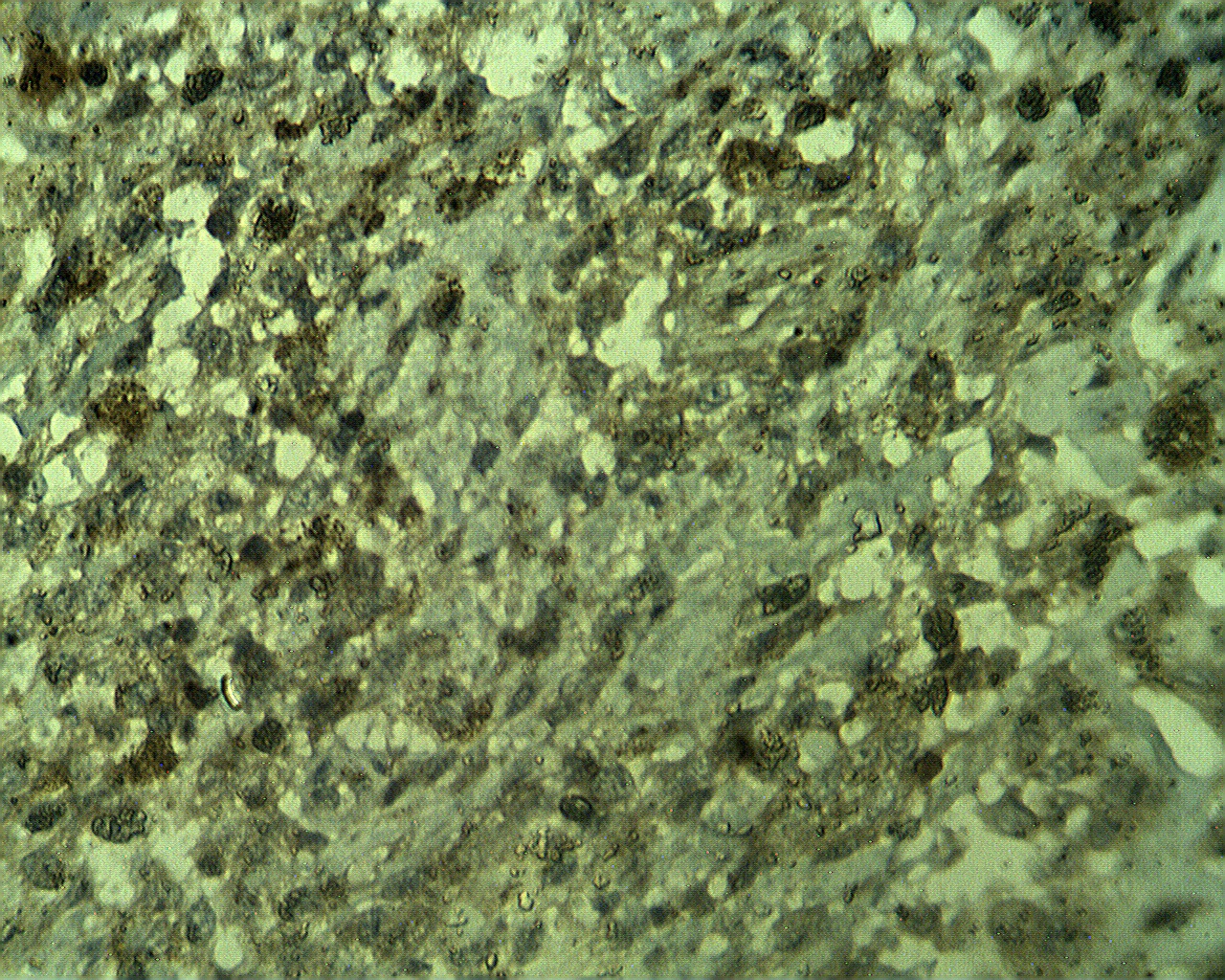
Rabbit anti Human Microphthalmia Transcription Factor (MiTF)
Catalog number: X2409P| Product Type |
Polyclonal Antibody |
| Units | 100 µg |
| Host | Rabbit |
| Species Reactivity |
Human |
| Application |
ELISA Western Blotting |
Background
In Western blotting, it recognizes a doublet of 52-56kDa, identified as serine-phosphorylated and unphosphorylated forms of melanocytic isoforms of microphthalmia (Mi) transcription factor. There are two known isoforms of MiTF differing by 66 amino acids at the NH2 terminus. Shorter forms are expressed in melanocytes and run as two bands at 52kDa and 56kDa, while the longer Mi form runs as a cluster of bands at 60-70kDa in osteoclasts and in B16 melonoma cells (but not other melanoma cell lines), as well as mast cells and heart. It reacts with both melanocytic as well as the non- melanocytic isoforms of MiTF. This Ab does not cross-react with other b-HLH-ZIP factors by DNA mobility shift assay. Mi is a basic helix-loop-helix-leucin zipper (b-HLH-ZIP) transtripotion factor implicated in pigmentation, mast cells and bone development. The mutation of MiTF causes Waardenburg Syndrome type II in humans. In mice, a profound loss of pigmented cells in the skin eye and inner ear results, as well as osteopetrosis and defects in natural killer and mast cells. These melanocyte isoforms have been shown by two dimensional tryptic mapping to differ in c-Kit-induced phosphorylation. Osteopetrotic rat strain harbors a large genomic deletion encompassing the 3Õ half of MiTF including most of the b-HLH-ZIP region. Osteoclasts from these animals lack MiTF protein in contrast to wild-type rat, mouse, and human osteoclasts.
Synonyms: MiTF
Source
Immunogen: Synthetic peptide derived from the human MiTF protein
Product
Product Form: Unconjugated
Formulation: Provided as solution in phosphate buffered saline with 0.08% sodium azide
Purification Method: Ammonium Sulfate Precipitation
Concentration: See vial for concentration
Applications
Antibody can be used for Western blotting (1-5 µg/ml). Optimal concentration should be evaluated by serial dilutions.
Functional Analysis: Western Blotting
Positive Control: Human melanoma tissue
Storage
Product should be stored at -20°C. Aliquot to avoid freeze/thaw cycles
Product Stability: See expiration date on vial
Shipping Conditions: Ship at ambient temperature, freeze upon arrival
Caution
This product is intended FOR RESEARCH USE ONLY, and FOR TESTS IN VITRO, not for use in diagnostic or therapeutic procedures involving humans or animals. It may contain hazardous ingredients. Please refer to the Safety Data Sheets (SDS) for additional information and proper handling procedures. Dispose product remainders according to local regulations.This datasheet is as accurate as reasonably achievable, but Nordic-MUbio accepts no liability for any inaccuracies or omissions in this information.
References
1. Weilbaecher KN, et. al. Age-resolving osteopetrosis: a rat model implicating microphthalmia and the related transcription factor TFE3. J. Exp.Med. 1998, 187: 775-785
2. Hemesath P, et. al. MAP kinase links the transcription factor microphthalmia to c-Kit signalling in melanocytes. Nature. 1998, 391:298-301
Protein Reference(s)
Database Name: UniProt
Accession Number: O75030
Species Accession: Human
Safety Datasheet(s) for this product:
| NM_Sodium Azide |

|
Immunohistochemical staining of human melanoma tumor using MiTF polyclonal antibody (Cat. No. X2409P) at 10 µg/ml. |

Immunohistochemical staining of human melanoma tumor using MiTF polyclonal antibody (Cat. No. X2409P) at 10 µg/ml.
